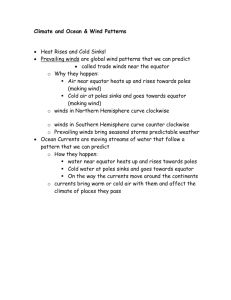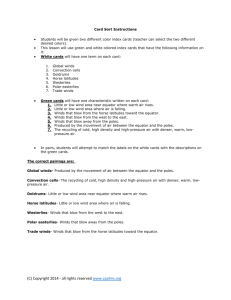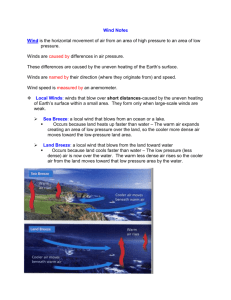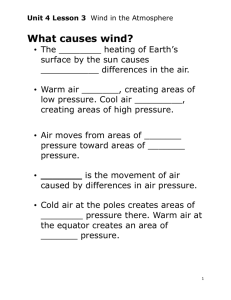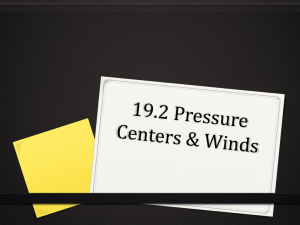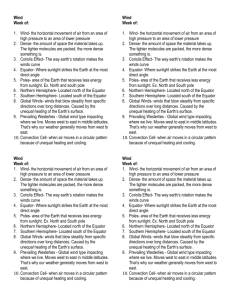Wind and Global Winds - Madison County Schools
advertisement
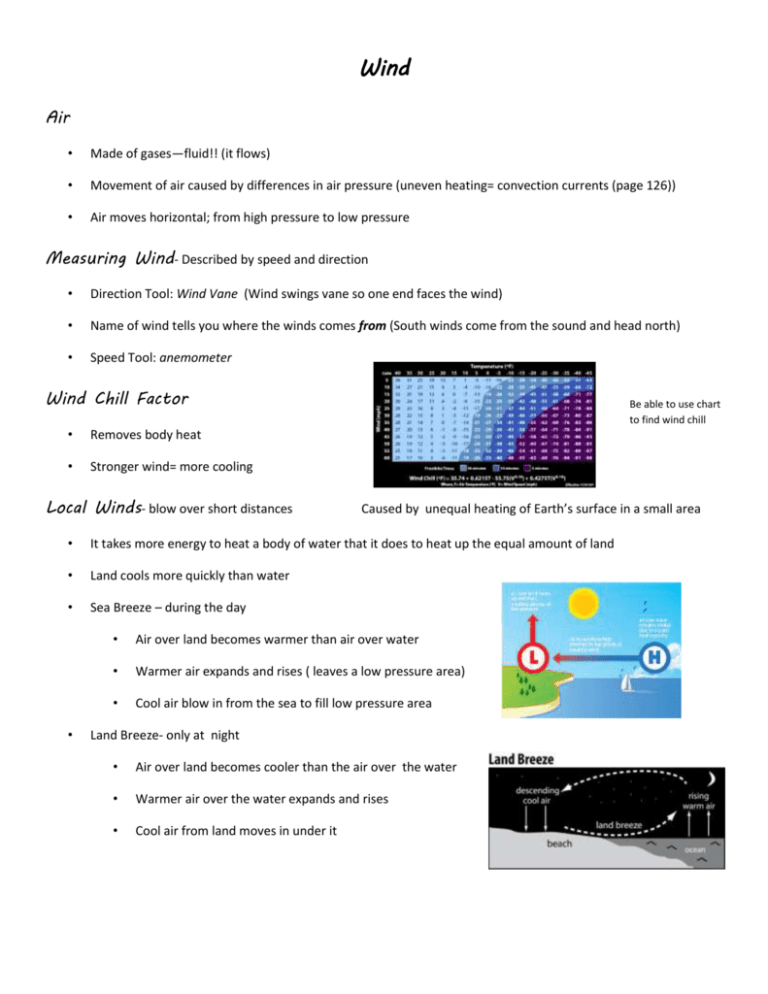
Wind Air • Made of gases—fluid!! (it flows) • Movement of air caused by differences in air pressure (uneven heating= convection currents (page 126)) • Air moves horizontal; from high pressure to low pressure Measuring Wind- Described by speed and direction • Direction Tool: Wind Vane (Wind swings vane so one end faces the wind) • Name of wind tells you where the winds comes from (South winds come from the sound and head north) • Speed Tool: anemometer Wind Chill Factor • Removes body heat • Stronger wind= more cooling Local Winds- blow over short distances Be able to use chart to find wind chill Caused by unequal heating of Earth’s surface in a small area • It takes more energy to heat a body of water that it does to heat up the equal amount of land • Land cools more quickly than water • Sea Breeze – during the day • • Air over land becomes warmer than air over water • Warmer air expands and rises ( leaves a low pressure area) • Cool air blow in from the sea to fill low pressure area Land Breeze- only at night • Air over land becomes cooler than the air over the water • Warmer air over the water expands and rises • Cool air from land moves in under it Global winds • Land cools more quickly than water • Air over land becomes cooler than the air over the water • Warmer air over the water expands and rises • Cool air from land moves in under it The angle of the earth changes the way the suns energy spreads out. Sun’s energy is spread = less heating of the surface Temps at the poles are lower because they get less light energy Global Convection Currents • Develop global winds • Giant convection currents in the atmosphere • Warm air rises at the equator and cool air sinks at the poles • Causes wind to blow from the poles toward the equator • Higher in the atmosphere, air flows away from the equator toward the poles The Coriolis Effect • If earth didn’t rotate global winds would blow in a straight line • Earth rotates from west to east • Rotation makes winds curve- CORIOLIS EFFECT • Winds blow and earth rotates underneath • Northern Hemisphere: winds gradually turn right • Southern Hemisphere: winds curve to the left Doldrums • Near the equator (large amount of sun’s energy) • Warm air constantly rising- creates area of low pressure • Cool air moves into the area but is warmed quickly • Rises before it can move very far • Little horizontal motion= weak winds Horse latitudes • Warm air from equator rises and divides heading north and south • Air stops moving toward the poles and sinks • Very calm “falling” air Trade Winds • Cold air over horse latitudes sinks and creates an area of high pressure • High pressure causes wind to flow towards and away from the equator • Wind towards the equator are turned west • Northern hemisphere- winds blow from northeast • Winds away from the equator are turned east • Southern hemisphere- winds blow from southeast Prevailing Westerlies Called westerlies because they blow from west to east • Between 30˚ and 60˚ north and south • Turned eastward by Coriolis effect • Blow away from Horse Latitudes • Northern Hemisphere: from southwest • Southern Hemisphere: from northwest • Important to weather of USA Polar Easterlies • Air near the poles is cold • Sinks and flows toward lower latitudes • Coriolis effect shifts them to the west • Meet prevailing westerlies at 60˚ north and south • Creates a polar front • Mix of cold &warm air effects weather in the USA Jet streams • 10km above earths surface • Band of high-speed winds • 100s of km wide • Blow from west to east • Have a wavy path • 200-400 km/hr

